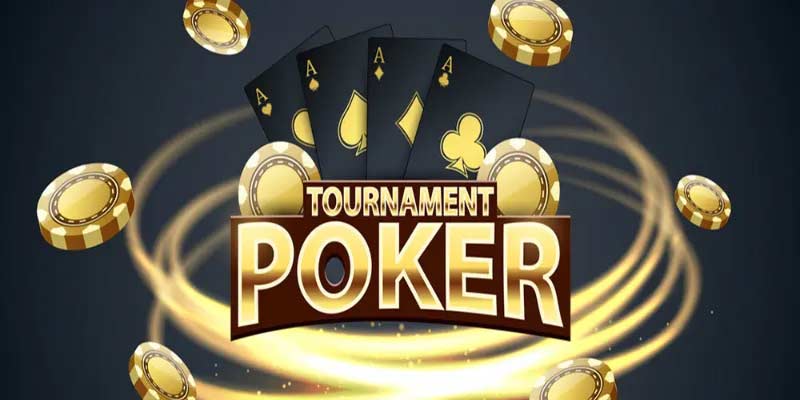Tournament poker is a high-stakes mental battlefield where only the most strategic players thrive. Every hand could end your run, demanding razor-sharp focus and adaptability. With fixed buy-ins and rising blinds, it’s a true test of nerve and skill. Visit my site: kubet to explore what it really takes to reach the final table.
Common Mistakes to Avoid in Tournament Poker
Despite keen strategies and preparation, many players still fall victim to common pitfalls during tournament poker. Recognizing these mistakes before they happen can save you valuable chips and enhance your overall play.
Overvaluing Hands
One prevalent error is overvaluing strong hands, particularly in early stages where aggression is typically lower. It’s easy to become attached to premium hands like pocket Aces or Kings, leading to inflated bets that can backfire.
Understanding the context of the game is critical here. Even with a strong hand, consider your position, stack size, and the tendencies of opponents. Holding onto a high pair in the face of heavy betting could cost you dearly.
By practicing discipline and avoiding emotional attachments to hands, players can make wiser decisions when faced with challenging scenarios.
Chasing Losses
Chasing losses is another significant mistake that can derail a player’s tournament run. After losing a sizable pot, some players feel compelled to recoup their losses quickly, leading to hasty decision-making and reckless plays.
Instead of reacting impulsively, it’s crucial to maintain composure and stick to your strategic plan. Taking a moment to breathe and reassess the situation can prevent costly errors that stem from frustration.
Developing a strong mental game and self-discipline is vital for resisting the temptation to chase losses. Recognizing that variance is part of tournament play helps players avoid premature exits due to impulsive reactions.
Neglecting Table Dynamics
Failing to pay attention to table dynamics can hinder a player’s ability to adapt appropriately. Each table features unique player styles, tendencies, and aggression levels. Ignoring these factors can lead to missed opportunities and unfavorable outcomes.
Regularly observing opponents and analyzing their behavior enables players to adjust strategies accordingly. For example, if the table is overly aggressive, playing tighter can help preserve chips while waiting for favorable situations to exploit.
Cultivating awareness of table dynamics ensures that players remain adaptable, enhancing their overall performance in tournament poker environments.
How to Manage Your Bankroll in Tournament Poker
Bankroll management often gets overlooked but is vital in surviving tournament swings. Smart financial control helps you weather losses and stay in the game longer. Read more: Ku thể thao to master the essentials that keep champions in play.
Setting a Budget
Before embarking on your tournament journey, setting a budget is essential. Determine how much of your bankroll you’re willing to allocate to tournaments and stick to that figure consistently.
Establishing a disciplined budget prevents impulsive decisions that could lead to financial strain. It’s advisable to select tournaments whose buy-ins are proportionate to your bankroll, ideally not exceeding 5% of your total funds for a single tournament.
Creating a clear budget provides a safety net, keeping your passion for the game intact while safeguarding your finances.
Tracking Results
Keeping track of your tournament results is crucial for analyzing your performance and refining your strategy. Maintaining a record allows you to identify patterns in your play, assess profitability, and adjust your bankroll allocation.
Documentation can include details such as tournament types, buy-ins, finishing positions, and winnings. By examining these metrics over time, players can spot strengths and weaknesses in their approach, enabling informed decision-making regarding future tournaments.
Stress Testing Your Bankroll
Understanding the implications of variance is essential in tournament poker. Stress testing your bankroll—by simulating potential downswings or analyzing historical data—ensures that you’re prepared for inevitable swings and shocks in tournament life.
By forecasting worst-case scenarios based on past performance, players can gauge the resilience of their bankroll. Building a buffer beyond the basic bankroll requirements can provide security against prolonged downswings, allowing for sustained participation in tournaments even during tough times.
The Importance of Table Position in Tournament Poker
Table position plays a pivotal role in shaping decision-making strategies during tournament poker. Your seating arrangement relative to other players directly impacts your ability to leverage information and control the action.
Early Position Strategy
Being seated in early position entails acting first in a betting round, which can limit your options. Playing conservatively is often advisable here, as strong hands are necessary to navigate the crowded field.
In early positions, focus on premium hands that can withstand potential aggression from later positions. Weaker hands may lead to difficult post-flop scenarios, so adopting a tighter approach is essential.
Additionally, be mindful of the players in later positions, as they possess the advantage of information. Adjusting your actions based on their tendencies becomes critical to surviving in early positions.
Middle Position Dynamics
Middle position offers more flexibility than early position, allowing players to widen their range somewhat. Here, players can capitalize on the information received from earlier actions while still considering the potential responses from opponents in later positions.
In middle position, both aggressive and opportunistic strategies can be implemented. Bluffing may become viable, provided it aligns with your overall approach and the tendencies of your opponents. Engaging in pot-building can yield beneficial outcomes if executed judiciously.
Being aware of stack sizes and playing styles within middle position remains paramount, as optimal positioning can facilitate effective decision-making.
Late Position Advantage
Late position reigns supreme in tournament poker, providing the most leeway for leveraging decisions. Players can observe opponents’ actions before formulating a response, fostering stronger strategic plays.
With an advantageous position, stealing blinds becomes easier, as players can exploit passive tendencies from earlier positions. Use this opportunity to apply pressure and accumulate chips gradually.
However, don’t forget the importance of remaining observant. If a player in a later position starts becoming excessively aggressive, reevaluating your approach is necessary. Using late position effectively requires balancing aggression with discretion.
Reading Your Opponents in Tournament Poker
The art of reading opponents is a foundational skill that can hugely impact your success in tournament poker. Understanding the psychology of other players and their tendencies allows you to make better-informed decisions.
Observational Skills
Developing keen observational skills is vital for gauging opponents’ behaviors during play. Pay close attention to body language, betting patterns, and overall demeanor—the clues can reveal a wealth of information about their hands and intentions.
For instance, a player who suddenly becomes unusually quiet or fidgety when they have a strong hand may give away more than they realize. Conversely, someone who consistently raises while appearing calm might indicate desperation or confidence.
Utilizing observational insights to inform your decisions can elevate your strategic advantages and help exploit opponents’ weaknesses.
Analyzing Betting Patterns
Betting patterns serve as informative signals that can reveal the strength of an opponent’s hand. Understanding when an opponent bets, checks, raises, or folds provides valuable context for making decisions.
Categorizing players into archetypes—tight, loose, aggressive, and passive—can help interpret their betting actions. For instance, a tight player who suddenly makes a large bet after a flop is more likely holding a strong hand than bluffing.
Analyzing these patterns throughout the tournament allows you to adjust your approach accordingly, increasing your chances of securing pots and avoiding traps.
Adapting to Player Types
Every player possesses unique styles and tendencies. Adapting your strategy to account for these differences enhances your overall effectiveness while navigating the tournament landscape.
Identifying player types—such as tight-aggressive, loose-passive, or hyper-aggressive—provides insights into their decision-making processes. This knowledge enables you to tailor your approach, whether to exploit a tight player’s reluctance to engage or to pressure a loose player into making mistakes.
Remaining flexible and adaptive in your tactics allows you to seize opportunities presented by player types. Ultimately, honing your ability to read opponents fosters a competitive edge in tournament poker.
Advanced Techniques for Tournament Poker Players
As players gain experience in tournament poker, exploring advanced techniques enriches their strategies and enhances their overall performance.
ICM Considerations
Independent Chip Model (ICM) analysis offers insights into the monetary value of tournament Poker chips in correlation with the payouts. Understanding ICM helps players make informed decisions, especially during critical moments near the bubble.
Applying ICM principles assists in determining when to tighten up or take calculated risks. For example, if you’re approaching the money bubble but hold a larger stack, leveraging that advantage can pressure shorter stacks into folding.
Awareness of ICM dynamics can influence all stages of play, maximally aligning decision-making with the ultimate goal—obtaining a share of the prize pool.
Creating a Balanced Range
A balanced range strikes a delicate equilibrium between strong and speculative hands in your play. Incorporating a mix of value and bluffing hands confounds opponents, preventing them from accurately reading your intentions.
In tournament poker, establishing a balanced range is crucial for maintaining unpredictability. This involves strategically integrating bluffs into your repertoire while simultaneously extracting value from premium hands when opportunities arise.
Fostering a balanced approach complicates opponents’ abilities to counteract your strategies, enhancing your overall competitiveness in various tournament settings.
Utilizing Exploitative Strategies
While foundational strategies provide a base for success, exploiting opponents’ tendencies allows for optimal performance. Identifying weaknesses and adjusting your approach to capitalize on them can transform your standing in tournaments.
Exploiting weaknesses can take many forms, such as exploiting overly cautious players by applying increased pressure or targeting overly aggressive opponents with strategic traps. Tailoring your tactics according to your observations leads to significant advantages.
Implementing exploitative strategies requires ongoing vigilance and adaptability, ensuring that you adjust your tactics as opponents adapt to your game.










